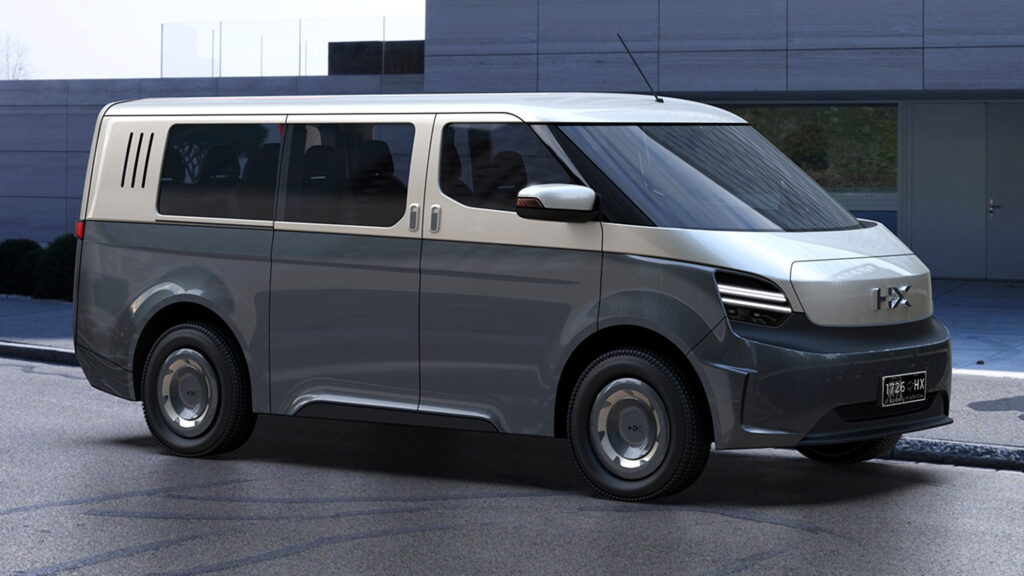Australian company H2X Global presented a new van concept, developed in collaboration with the Austrian KTM with the goal of making hydrogen fuel-cell vehicles cheaper to produce. The H2X Darling was shown in van, pickup, and taxi bodystyles, with different interior configurations.
The H2X Darling is the second project of H2X following the 2021 Warrego hydrogen pickup based on the previous-generation Ford Ranger. The new prototype was only shown in digital renderings, adopting traditional van proportions, a wraparound windshield, sliding doors, and trick LEDs on both ends.
More: Toyota Kayoibako Is A Customizable Baby Van Concept For Personal And Business Use
H2X Global
The van was presented in three length options: 4,670 mm (183.9 inches), 4,903 mm (193 inches), and 5,324 mm (209.6 inches). The shorter version is similar in size to the VW ID. Buzz Cargo, while the stretched one reaches into VW Transporter and Ford Transit Custom territory. The three body lengths offer a cargo capacity of 4.6 m³ (162.4 cubic feet), 5.1 m³ (180.1 cubic feet), or 5.8 m³ (204.8 cubic feet) which are equivalent to ICE-powered vans of the same size. The maximum payload capacity is 3.5 tonnes (7,716 lbs), and the towable weight is between 1,000-2,550 kg (2,205-5,622 lbs).
The LCV is based on a new lightweight Smart Chassis architecture, developed in collaboration with KTM. The goal for the platform was to reduce production costs while being flexible and cheaper to maintain due to a “simpler electric powertrain”. H2X Global didn’t announce the specifications of the hydrogen fuel cell but promised a cruising range of over 400 km (249 miles) between refueling stops. Furthermore, the passenger-friendly taxi version comes equipped with 5G connectivity and ADAS sensors.
The H2X Darling is still at an early stage of development which explains why the company hasn’t built a prototype yet. As reported by Autocar, the Australian company is reportedly in talks with a “key supplier” in a quest to validate the project’s viability.





















